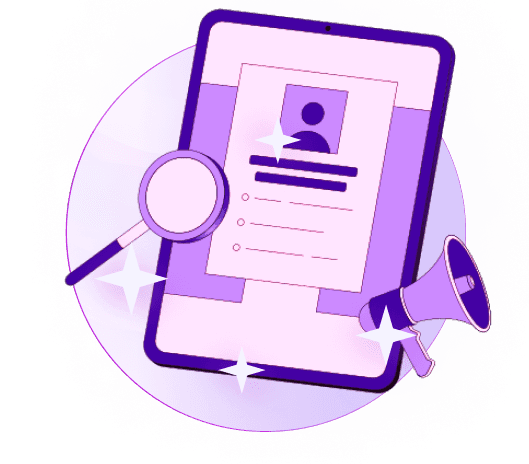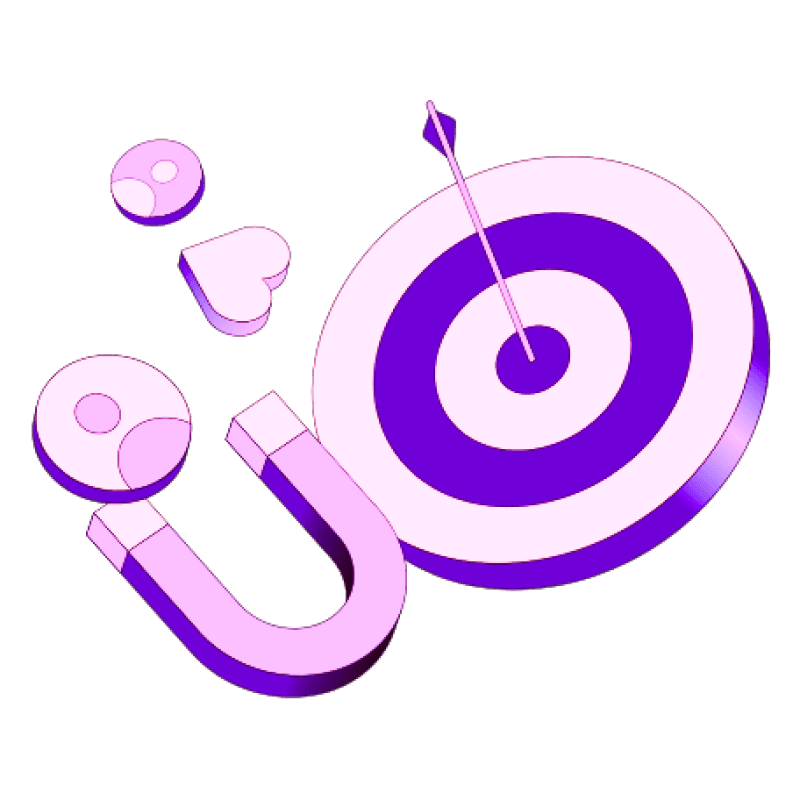Blogs
Articles

Waterfall Enrichment Examples: How Multiple Data Sources Improve Leads
Here's a shocking stat - poor data quality drains U.S. businesses of over $611 billion annually. Waterfall enrichment examples demonstrate why sales teams can't succeed without this approach today.
Sales teams that utilize enriched data see amazing results. Their win rates per employee jump by 50%. This explains why b2b lead enrichment through the waterfall approach proves so crucial, especially since data goes stale at 2.1% monthly, reaching 22.5% yearly.
This piece will take you through real-life waterfall enrichment examples and show you the step-by-step process that reshapes the scene of lead generation. Your match rates could soar from 50-60% to beyond 80%, and you'll generate 44% more Sales Qualified Leads.
What is Waterfall Enrichment and Why It Matters?
Waterfall enrichment is a sequential data enhancement strategy that utilizes multiple providers to maximize contact information accuracy. This method works by passing contact data through a series of data sources, one after another, until the desired information is found or all sources are exhausted. The system automatically queries the next provider in line when one provider can't deliver specific data like email addresses or phone numbers.
How it differs from single-source enrichment?
Traditional single-source enrichment typically achieves only 50-60% match rates, leaving major gaps in your outreach capabilities. Poor data quality creates major obstacles for sales teams:
Sales representatives waste about 21% of their time—equivalent to one full workday per week—because of poor-quality data
Single providers don't excel in all types of industries, company sizes, and regions despite their detailed coverage claims
Global companies face unique challenges because providers often specialize in specific regions (Apollo works best in US, ContactOut in UK, Datagma in France)
Waterfall enrichment pushes match rates to 80% or higher, with some implementations reaching up to 93%. These better results come from a simple principle—don't stop at the first attempt.
Single-source enrichment's verification systems aren't strong enough. B2B contact data decays by 30% annually, which makes single-provider data quickly outdated and unreliable. Multi-source verification in waterfall enrichment catches outdated information that might otherwise slip through.
Why B2B lead enrichment needs a better approach?
Data accuracy directly affects revenue generation for B2B companies. Organizations with properly enriched CRM data generate 44% more Sales Qualified Leads than those without. Waterfall enrichment can boost revenue by up to 45% without changing products, pricing, or conversion rates.
The waterfall approach solves several critical business challenges:
Pipeline deterioration - Sales teams stop trusting the system when they repeatedly find unreliable data, which leads to decreased CRM adoption and inconsistent sales processes
Resource wastage - Marketing teams waste budget on campaigns that never reach their targets without accurate data
Incomplete lead information - Different vendors excel in different areas (emails, phone numbers, job titles), making a layered approach essential for complete profiles
Purpose-built waterfall enrichment solutions deliver better results with less effort while maintaining compliance with data privacy regulations, unlike building in-house waterfall systems (which can cost $1,000-$10,000 in employee salaries plus hundreds in monthly service fees).
Sales teams get access to more prospects through precise targeting, effective personalization, improved lead scoring, and better conversion rates. This helps them find valid contact information for much of their target audience.
How the Waterfall Process Works Step-by-Step?
The waterfall enrichment process follows a logical structure that optimizes your data completeness. Here's how this multi-step process works.

Start with your primary data provider
Your most trusted data source kicks off the waterfall process. You should select your primary provider based on their strengths—maybe they excel at email verification or give the best pricing for high-volume needs. This original provider tries to fill all data gaps using your simple input information, which has names, company domains, or LinkedIn profiles.
Move to secondary and tertiary sources
The system automatically moves to your second-ranked provider when your primary source can't complete all required fields. Each provider after that only receives incomplete fields, which prevents unnecessary duplicate lookups. This flow continues through your vendor sequence—some advanced systems can combine smoothly with up to 20 different data providers.
Stop when valid data is found or all sources are exhausted
This approach shines because of its speed. The process stops for a field as soon as valid information appears. You only pay for the first successful data point, which helps avoid duplicate charges. The system marks that field as unavailable if no valid data shows up after checking all integrated sources.
Visualizing the process with a waterfall infographic
Picture the waterfall process as data flowing down through different tiers:
Input Layer: Simple prospect information
Primary Provider: First attempt at enrichment
Verification Layer: Confirms information quality
Secondary Provider: Activates if primary source fails
Tertiary Layer: Final attempt at data completion
This tiered approach shows why waterfall enrichment boosts match rates from about 60% with single providers to over 80% with the complete waterfall approach. Each provider acts as a separate tier in the cascade and creates a natural flow of information from one level to the next.
You should rank your vendors based on their reliability, budget-friendly options, and data specialties before setting up your waterfall system. Note that some vendors excel in specific regions or industries—Apollo might work best for US contacts, while ContactOut works better with UK prospects.
This sequential enrichment method turns simple contact information into complete, verified prospect data through a systematic approach that optimizes data quality and reduces costs.
Real-World Waterfall Enrichment Examples
Real-life implementations show how companies get amazing results with waterfall enrichment. These examples highlight different ways companies improve data quality through multi-source enrichment.
Example 1: Using Persana for email enrichment
Persana connects to more than 75 data providers at once. Users can build custom data waterfalls by selecting specific enrichment providers and setting their sequence order. Their PersanaVector™ technology stands out because it uses semantic intent recognition instead of simple keyword matching. This approach achieves 76% higher relevance scores compared to traditional search methods.
You can test this approach at Persana.ai and see how their waterfall enrichment boosts your contact data coverage.
Example 2: Clay's 20-provider waterfall setup
Clay brings together access to more than 50 trusted data sources including SMARTe, ZoomInfo, and Clearbit. The platform gives credits back when data providers can't find emails. It also checks emails automatically with your preferred provider. Users can customize their sequence by reordering, adding, or removing waterfall data providers.
Example 3: FullEnrich's LinkedIn and CSV workflows
FullEnrich shows great results through a simple workflow. Users build lists in Clay, export them to CSV, upload to FullEnrich, and download only valid emails. Software company Guideflow tried this approach and saw a 37% increase in sales pipeline after using FullEnrich's waterfall system.
Example 4: Cognism's CRM enrichment automation
Cognism's proprietary verification system combines AI technology with human checks. The platform offers three options: instant CRM enrichment that speeds up lead responses, scheduled enrichment at set times, or CSV enhancement when needed. Their Diamond Data® feature provides phone-verified mobile numbers that help users reach decision-makers three times more effectively.
Conclusion
Waterfall enrichment is changing the game for sales teams that don't deal very well with incomplete or inaccurate data. This piece shows how sequential enrichment turns simple contact information into detailed, verified prospect profiles. The numbers tell the story - match rates jump from 50-60% with single providers to over 80% when teams implement a waterfall system properly.
Results prove the business value clearly. Companies that make use of enriched data see 44% more Sales Qualified Leads and their win rates per employee increase by 50%. Revenue grows up to 45% without any changes to products, pricing, or conversion strategies.
The step-by-step process maximizes efficiency naturally. Data moves through provider hierarchy and stops only when valid information appears or all sources run dry. Sales teams get better results compared to traditional single-source methods without wasting resources.
Real-life examples from Persana, Clay, FullEnrich, and Cognism show impressive outcomes in businesses of all types. Each platform brings its own strengths to the table, but they all follow one basic principle - never stop at the first attempt.
Bad data costs businesses billions every year. Waterfall enrichment gives teams a clear way forward. This approach fixes critical issues like pipeline deterioration, wasted resources, and incomplete lead information. Sales teams with enriched data spend more time closing deals instead of fixing outdated contacts.
Waterfall enrichment gives companies a strategic edge in today's competitive B2B world. The choice is simple - you can't afford to ignore this approach anymore. Your sales team needs complete, accurate data, and waterfall enrichment delivers exactly that.
Key Takeaways
Waterfall enrichment transforms lead generation by using multiple data sources sequentially, dramatically improving data quality and sales outcomes.
• Waterfall enrichment boosts match rates from 50-60% to over 80% by cascading through multiple data providers until valid contact information is found.
• Companies see 44% more Sales Qualified Leads and 50% higher win rates when using properly enriched data compared to single-source approaches.
• The sequential process stops when data is found, preventing duplicate charges while maximizing coverage across different provider strengths.
• Real implementations show measurable results - Guideflow achieved 37% pipeline increase, while some companies report 45% revenue growth without changing products.
• Poor data quality costs U.S. businesses $611 billion annually, making waterfall enrichment essential for competitive advantage in B2B sales.

Create Your Free Persana Account Today
Join 5000+ GTM leaders who are using Persana for their outbound needs.
How Persana increases your sales results
One of the most effective ways to ensure sales cycle consistency is by using AI-driven automation. A solution like Persana, and its AI SDR - Nia, helps you streamline significant parts of your sales process, including prospecting, outreach personalization, and follow-up.



